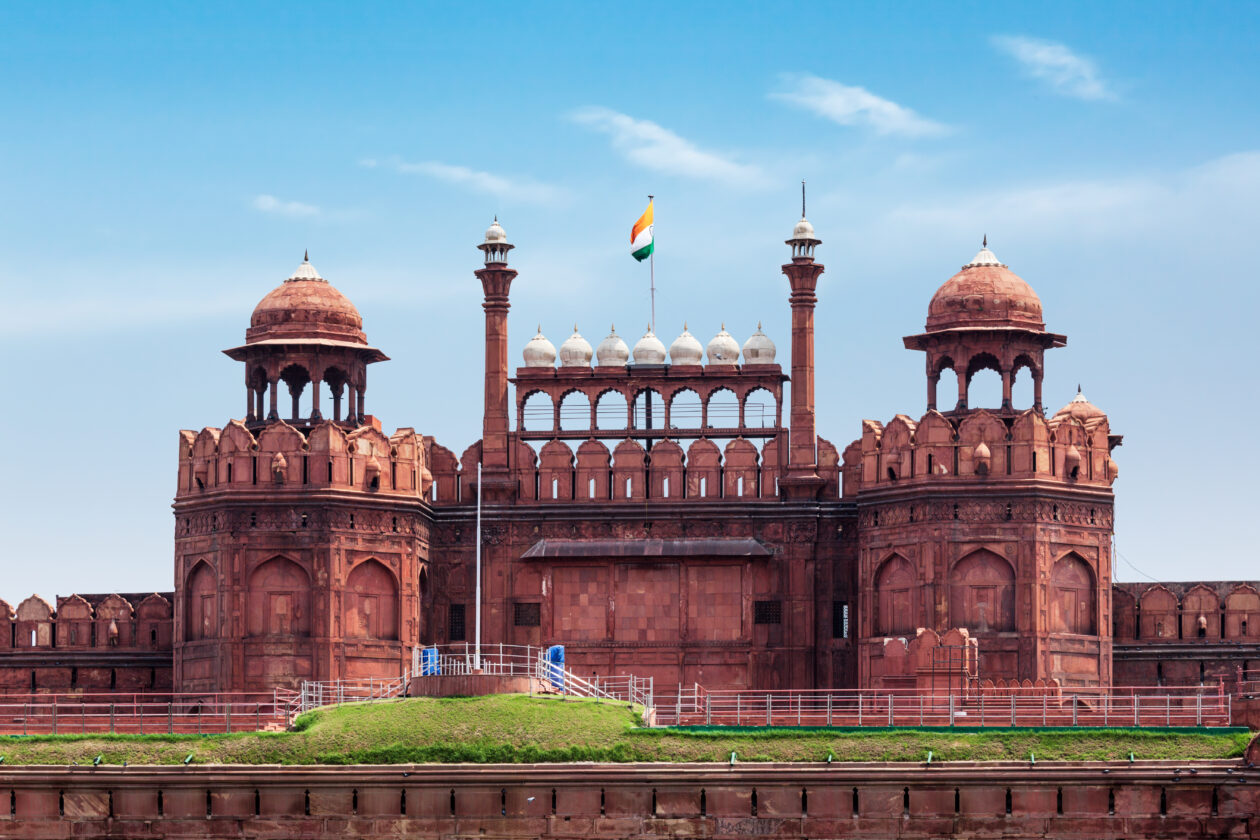India’s government slapped a flat 30% tax on all crypto income from April last year and then imposed a 1% tax deducted at source (TDS) on transactions above 10,000 Indian rupees (US$122). If that wasn’t enough, crypto traders are not allowed to offset losses against gains elsewhere and despite all the taxes, the government still has not clarified the legal status of digital assets.
One response to these challenges from India’s CoinSwitch cryptocurrency exchange, which said it has over 19 million registered users, is to introduce its first non-crypto range of investment products.
Forkast’s Pradipta Mukherjee caught up with Ashish Singhal, co-founder and chief executive of CoinSwitch, on the exchange’s plans for 2023. The Q&A has been edited for clarity and length.
Pradipta Mukherjee: Why is CoinSwitch introducing non-crypto products and what are they?
Ashish Singhal: We have seven new non-crypto products in our 2023 roster, which includes fixed deposits, ETFs [exchange-traded funds], mutual funds, stocks, bonds and U.S. equities.
The goal is to be the one-stop wealth-tech destination for every Indian. As we diversify into other asset classes, there are different business models we are experimenting with to check which is the best for customers. There are multiple partnerships in place since we are launching such large-scale assets onto our platform. [Editor’s note: CoinSwitch declined to give the names of partners or detail on licenses obtained to sell non-crypto products.]
Mukherjee: How does it work for a crypto exchange to introduce non-crypto products?
Singhal: Our goal is to make products which enable the common person to easily understand how and where to invest. While we will remain crypto-first, we are here to make investing simple for Indians.
We started off with a mission to make money equal for all. Crypto was the starting point for us but we will continue to innovate towards being a wealth tech platform. We see crypto as an investment class that is offered alongside other assets, to help users build a diversified portfolio.
Mukherjee: How will introducing non-crypto products help CoinSwitch’s business in the current conditions?
Singhal: Our plan to become a wealth tech platform was shaped over two years ago, and we have constantly been making progress on it. Whether it is in the bear or bull market, it won’t change our plans. We wanted to expand and give people a way to invest across asset classes, starting with crypto.

Mukherjee: How profitable is the non-crypto products business compared to the crypto trading business?
Singhal: We are here to be able to help India invest better. Today, less than 0.2% of India actually invests beyond fixed deposits. And what CoinSwitch wants to do is get to hundred million users in the next four years who actively invest.
Many people are reluctant to invest, not because they lack the funds, but rather because they lack the necessary knowledge. The biggest hurdle for most people right now is choosing the right investment asset based on their risk appetite. We believe that if we can make investing simple, the user engagement rate will grow significantly. Another aspect is imparting the right knowledge. An educated user is an informed investor. Thus, it is important to provide the right information to help bridge the knowledge gap that could enable more Indians to invest and thereby build wealth.
Mukherjee: How much has CoinSwitch’s crypto trade volumes dropped after introduction of India’s tax laws last year?
Singhal: We do not disclose our volume data, but the introduction of the crypto taxation did impact the overall trading volumes in the industry.
We welcome the government’s intention of traceability and taxability. However, the current structure needs to be refined to be able to make the taxation policy progressive in nature.
We have been holding regular discussions with relevant stakeholders to help them realize our industry’s potential. They have been open to our views, and I hope that we see some of it translate into reality soon.
Mukherjee: How did CoinSwitch restructure or cut headcount in 2022?
Singhal: CoinSwitch is over 600 people strong today. Our workforce grew over 40% between December 2021 and December 2022. We have always been frugal in terms of our operations and hiring. Irrespective of market conditions, we have always hired for what or when we need, such as hiring the right talent which enables us to expand into other asset classes and products.
Mukherjee: What do you see realistically happening in 2023?
Singhal: From an innovation perspective, India has always been a powerhouse, and known for its tech prowess. Real life utility of the blockchain technology, the underlying technology for crypto, expanded in 2022 via builder activity. So much so that even various government departments used blockchain technology to streamline their processes and make them efficient, secure and reliable.
But the unfriendly taxation policy curbed investor sentiment, which led to users foraying into gray markets to avoid taxes, and exposed them to international vagaries like FTX, and regulatory issues.
The innovation aspect, aka, builder activity, however, seems to have absorbed these shocks. Our crypto ecosystem holds a massive potential in India, for the world and to take the global lead, further fueling the Digital India narrative.

Thus, in 2023, I wish for India’s crypto taxation policy to be refined, to make it more accepting of the investors, innovators and other players.
Mukherjee: Reserve Bank of India Governor Shaktikanta Das recently said that the next financial crisis will come from “private cryptocurrencies” if they are not banned. How does CoinSwitch plan to survive in India if this is the RBI view of crypto?
Singhal: The regulators are right that India does not need crypto as a payment use case. Our existing payment systems and the recently tested e-Rupee (CBDC) address the everyday needs to make and receive payments.
The utility of crypto is that it is the engine that keeps a public blockchain running. And public blockchains are more scalable, flexible and affordable than private ledger solutions provided by Big Tech. In 2022, several Indian startups and even states [regional governments] were exploring public blockchains for population-scale solutions such as issuing diploma certificates or land records. It is these use-cases that a crypto asset derives its value from.
However, we understand the concerns, and like I said earlier, we are working with relevant stakeholders to help them understand the potential of cryptos.
Mukherjee: Have banking channels opened up to crypto exchanges in India?
Singhal: CoinSwitch allows only Indian rupee withdrawals and deposits. Investor protection is one of our key focus areas, and we continue to have discussions with various banking channels in that direction.
Mukherjee: Do you think the worst is over for crypto or is it going to get even more difficult in 2023?
Singhal: Crypto is still an emerging asset class. It is difficult to say whether 2023 will be better or worse. Despite entering the 2023 with bear sentiments, the industry continues to build and innovate. We plan to do the same.
Mukherjee: How financially healthy is CoinSwitch?
Singhal: CoinSwitch has a healthy balance sheet and enough cash to continue to grow and build. We had raised over US$260 million in 2021 from some of the biggest venture capital firms in the world. As our recent proof of reserves and liabilities report showed, CoinSwitch’s cash holdings in Indian Rupees are 7.21 times the Indian Rupees balance of our users. We have a healthy investment runway, and a frugal approach, making us confident of our financial health.
Mukherjee: How has the collapse of FTX hit your business?
Singhal: We had no exposure to the collapse of FTX, or its FTT token. The FTT token was never listed on the CoinSwitch app and hence our users had no investment in the asset on our app.
Mukherjee: Was FTX’s collapse the biggest blow to the industry in 2022?
Singhal: The crypto industry went through major corrections with added downward pressure from black swan events like Vauld, Terra-LUNA [stablecoin] implosion, Three Arrows Capital [hedge fund] and FTX bankruptcy. However, the overnight collapse of a company once worth US$32 billion is not an everyday matter. The FTX crisis was caused by the high leverage, mishandling of user funds and poor risk management. Such practices on finance can collapse any company in any industry, not just crypto.
However, FTX’s collapse brought forth an important issue for the crypto industry: the loss of jurisdictional oversight and the import of risks. The collapse has brought forth the need for regulations and international cooperation to keep investors protected.
Mukherjee: Is CoinSwitch’s income only from transaction fees right now?
Singhal: Yes, CoinSwitch earns from the commissions we charge for executing the buy and sell transactions on users’ behalf. That is our business model.
Mukherjee: India assumed the G20 presidency from December. Do you expect this to change crypto regulations for the worse or better?
Singhal: A global coordinated regulatory framework is the need of the hour to safeguard the industry’s users and players. India’s G20 presidency is being seen as a catalyst for the same and could be a great initiative to set the future course for growth of Web 3.0.

Mukherjee: The Indian government seems overwhelmingly unfriendly to crypto, but does the Indian crypto industry have any friends or allies within the government?
Singhal: We cannot speak for the government, and what we know about their stance on crypto is what is publicly available. However, our reading from the statements by the finance ministry is that India wants to put in place a regulatory framework that enables responsible crypto businesses and protects investors.
Mukherjee: India’s central bank has run trials of both wholesale and retail CBDCs. How do you think that will affect cryptocurrency trading in India?
Singhal: It is possible for the Indian Central Bank Digital Currency (CBDC) to exist alongside cryptos and for both to be successful in the future. CBDCs and crypto assets have different applications in the Indian context and one does not replace another. CBDC represents digitization of the fiat currency and is an evolution of the existing digital payment system. This presents opportunities for reducing currency management costs.
Comparing CBDCs to cryptos is like comparing rupees to stocks. The use case of CBDCs is payments while crypto assets are investment tools like stocks. Cryptos are a gateway to a future decentralized world, the Web3.
(Story updated to change headline, show in first section CoinSwitch declined to name partners for non-crypto products.)





